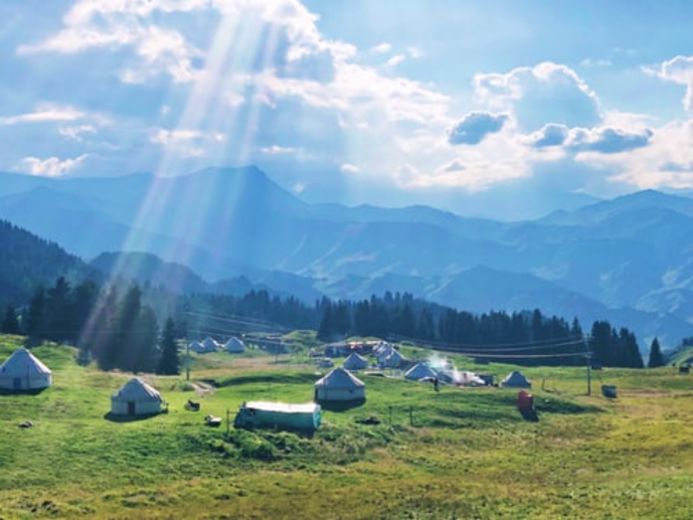The Mongolian Steppe is a harsh and cold place, where the wind blows you off your horse. But there’s something about it that remains unchanged; Horses provide food (milk) for transport as well as warfare in this environment with their riders often remaining on them from birth until death at age three or four. The ger -a type of yurt- provides shelter without having any need to feed yourself because everything necessary can be found within its walls!
The Mongolian yurt is the traditional home of many people living in Mongolia. It’s commonly called “gers”, which can either mean home or field shelter from those who live out on pastureland and have no other means for housing themselves during harsh winters such as these cows that are huddled together near an open fire while they wait out their long night under variable temperatures with scarce amounts rainfall each year.
These dwellings are a symbol of longevity and durability. The Mongols were able to thrive on the steppe with these simple yet effective buildings for centuries, surviving through winters that would otherwise kill any creature not accustomed enough.
The nomads built them so everything they needed could fit inside – from clothing in cold climates such as burlap or woolens made from yak butter mixed with honey; bedding which included felt covers alongside cotton liners found under pillows (a common practice even today); cooking utensils like bowls crafted out leather skins when possible rather than porcelain ones because those weren’t always available where someone might live; parts of the ger that weren’t covered in felt were decorated with sinew or silk, to keep the cold wind out; finally weapons like bows and arrows to protect yourself from other people and predators.
The Mongolian yurt is a structure made of wood for supporting a covering, typically erected on a movable wooden frame by traditional nomadic Mongolian families as their home. The frame consists of one or more expanding lattice wall sections, a door-frame, columns (4 – 6), and a crown. The Mongolian yurt is set upon a circular platform surrounded by a wooden railing about three feet high, called the “Khan’khi’. The wooden platform rests on a tripod which consists of three slender poles about ten feet in length for stability. It is the basic structure from which other attachments are added to form the Mongolian yurt.

The walls of these homes are about one inch thick (often built by expert craftsmen who make smaller doors for them because they’re easier to install) and made up mostly of stone, brick, or concrete.
The roof shape has changed somewhat over the years (less rounded) and there has been an external decorative covering – until recently, the outer layer was felt.
In heavy winds, the yurt’s unique circular design allows the wind to flow around and over it, effectively pushing the yurt more firmly to the earth. The lattice walls are made up of smaller pieces that are joined together by horsehair materials used in the yurt have been designed to not rot in a humid environment which often experiences flooding in spring and autumn.
The ger is a circular house without corners that was built to endure the severe weather conditions of living on the steppe, but it may be pricey to construct nowadays owing to the high cost of materials! Larger rope. These can simply be folded down and compacted into a flat pack. Traditionally, the main poles and crown were hand-painted with brown, green, and red designs which created a pattern on the outside of the yurt.
Tents are temporary shelters that are lightweight, portable, usually easy to assemble, inflatable, or made from fabric. Modern tents are mainly used for camping or outdoor activities due to their lightweight nature. They are often designed with a single pole in the center holding up the tent.
The Mongolian yurt is historically made of natural materials such as wood covered in animal hides. However, due to warfare and humanitarian efforts that increased the cotton industry, this changed during the 20th century.
Today, the ancient Mongolian yurt is still revered because it has evolved into what may be found in homes today – both traditional and contemporary. The fundamental design has remained unaltered, although the covering materials have evolved to make it more versatile in a variety of climates.
